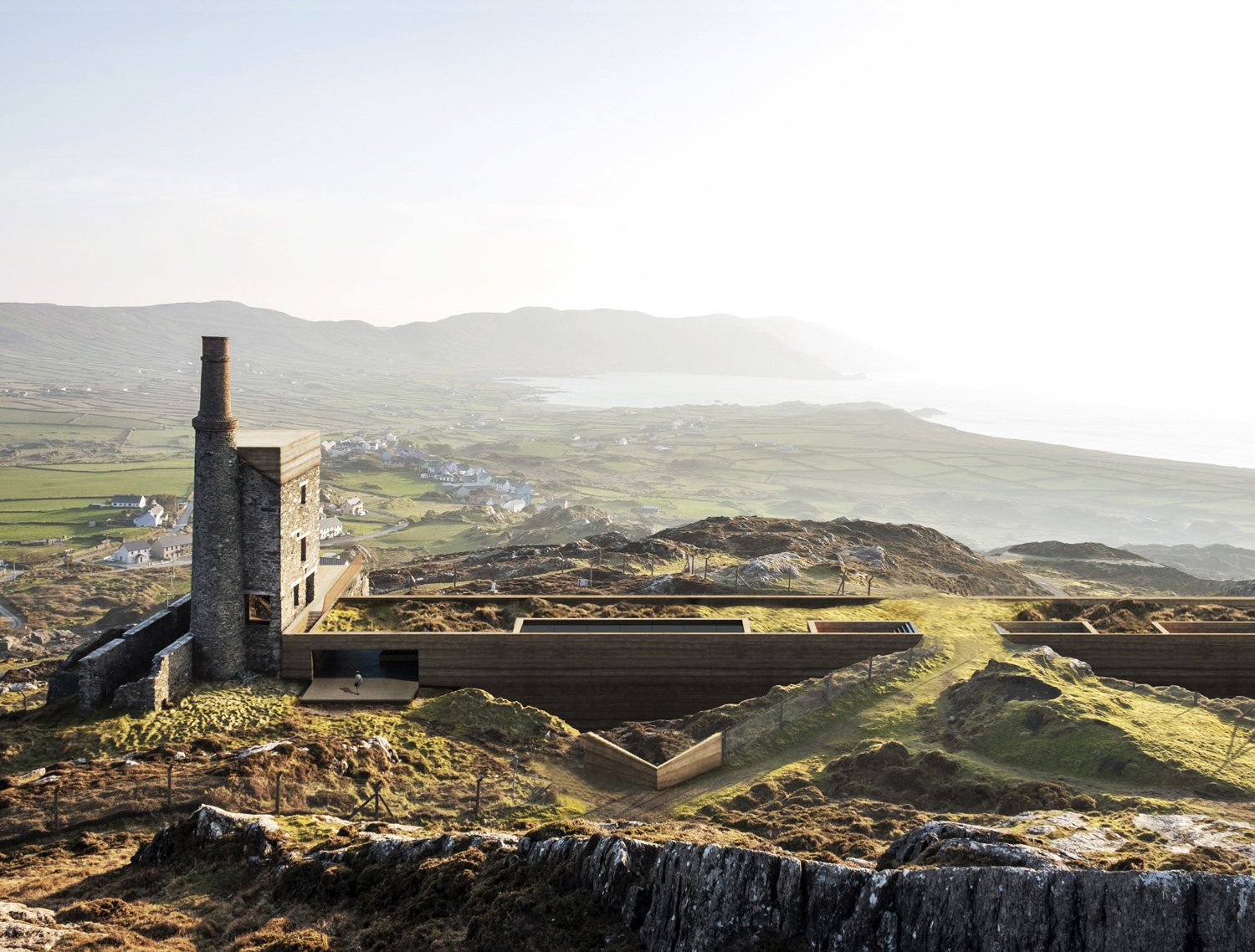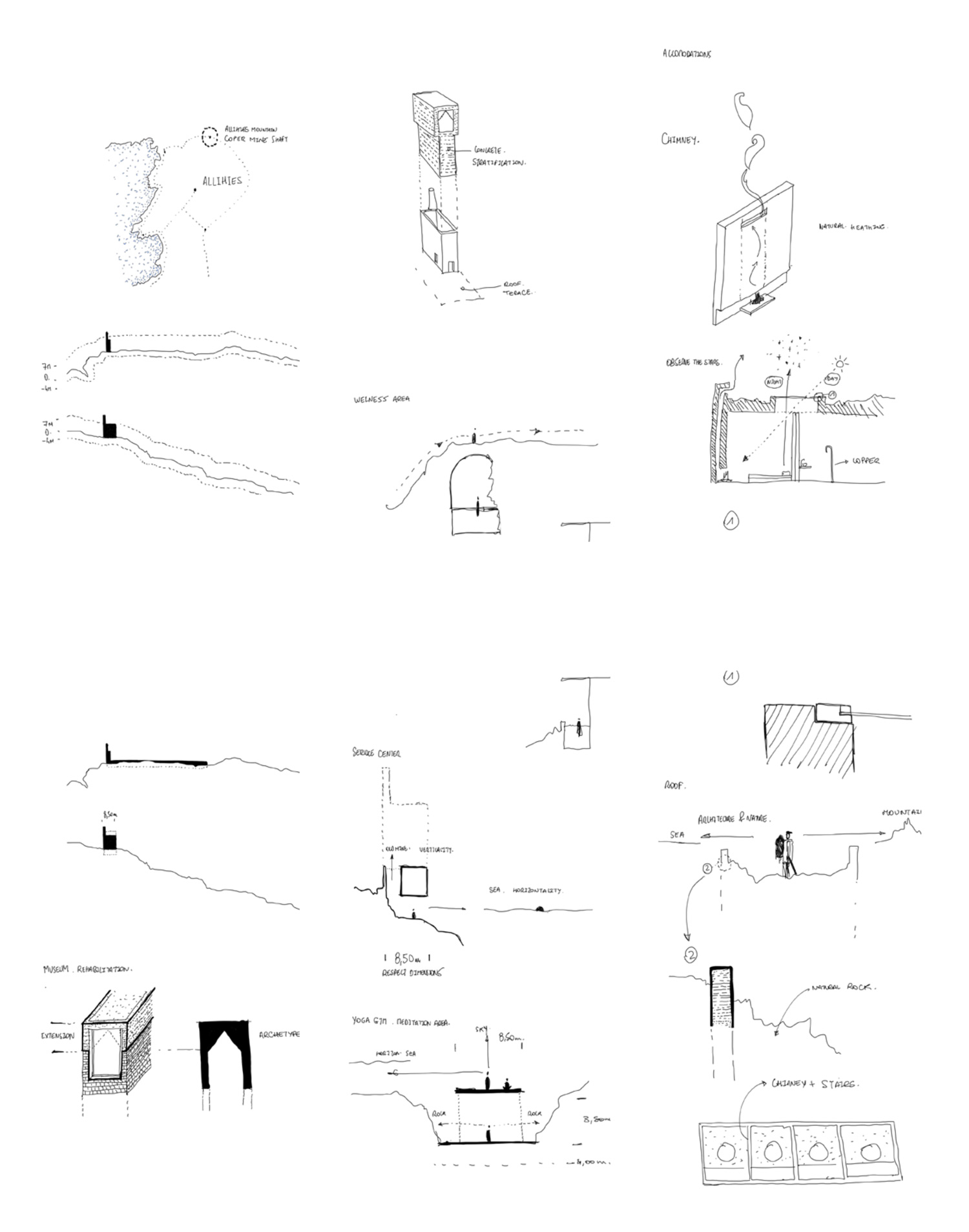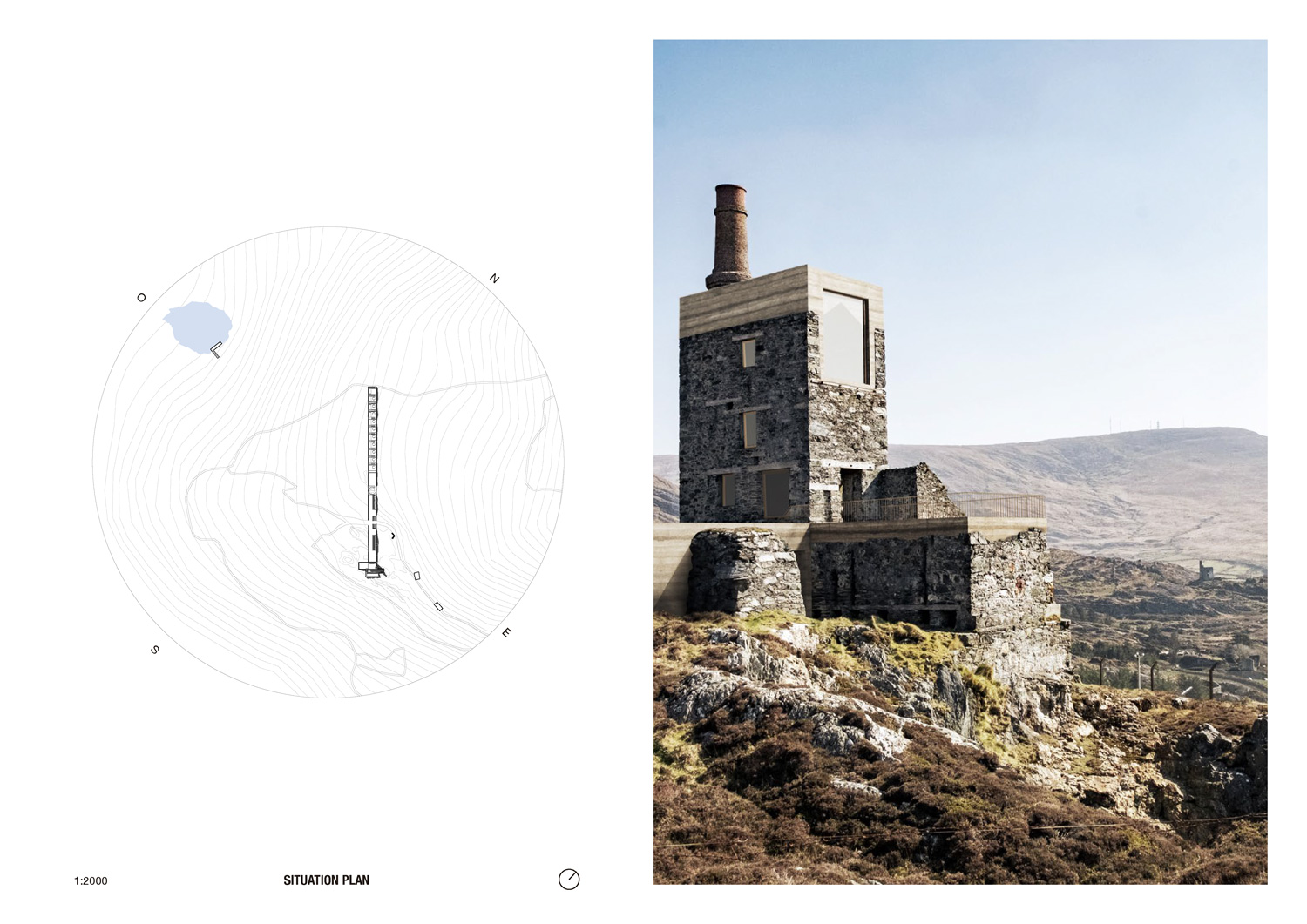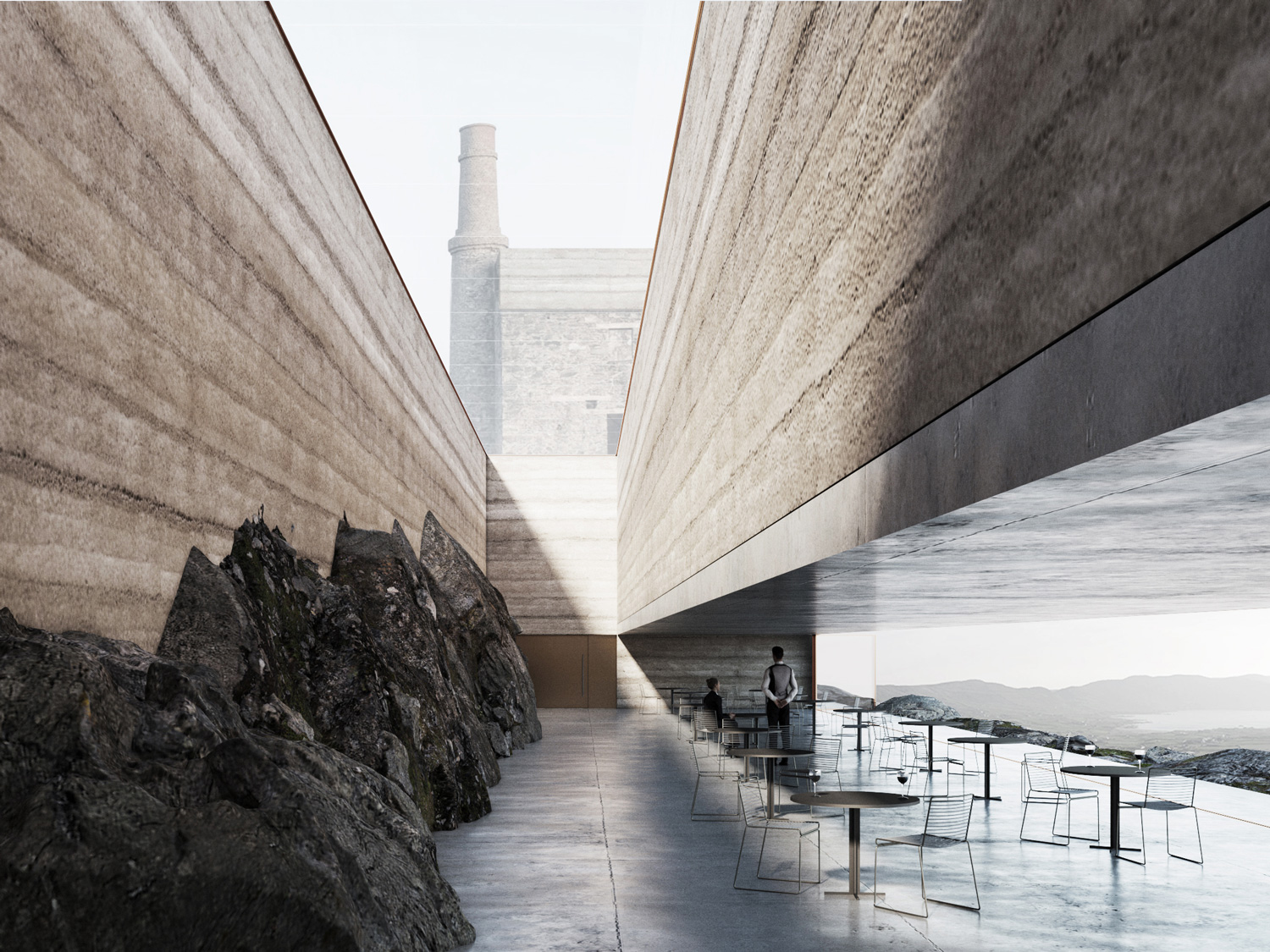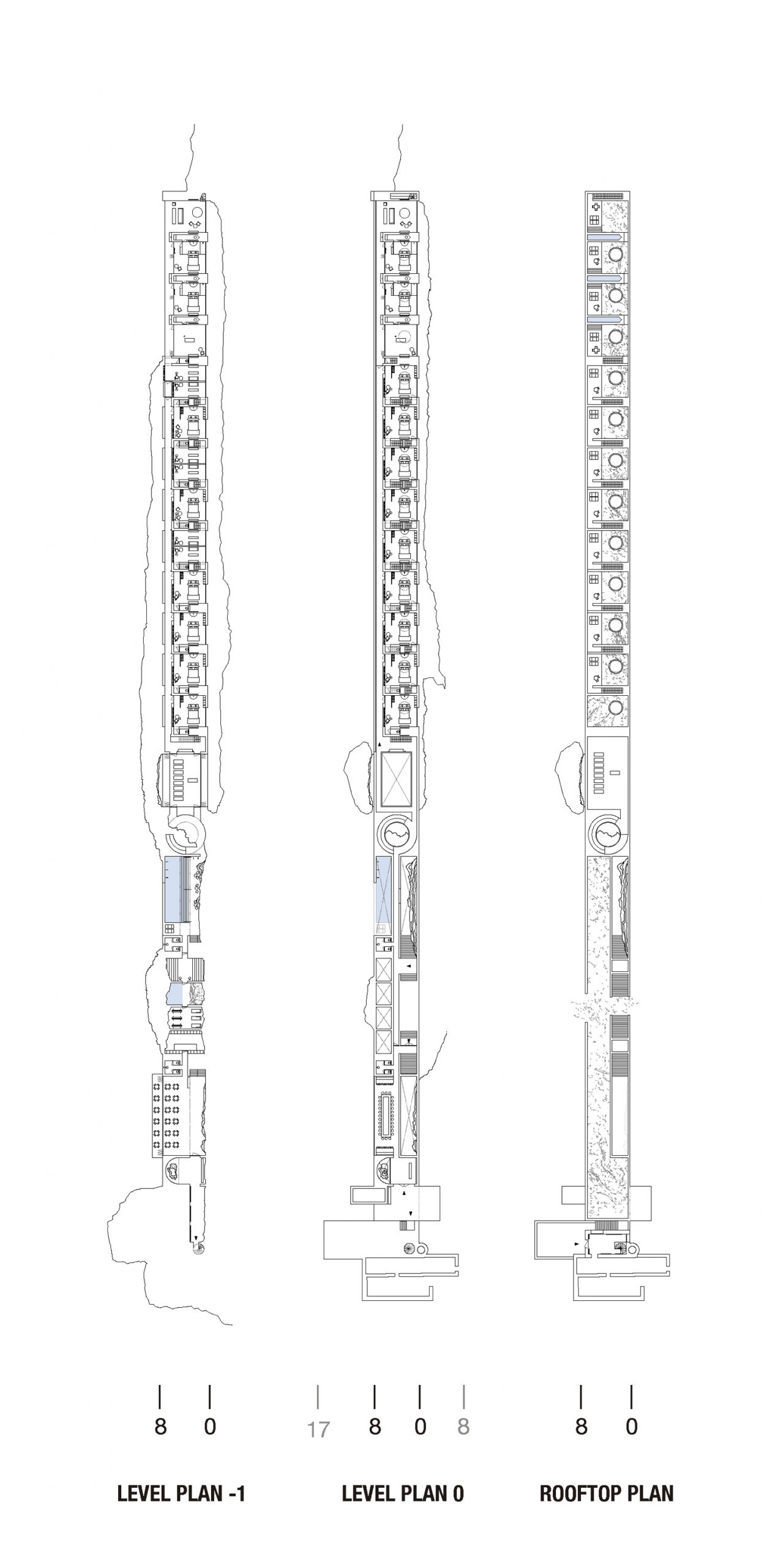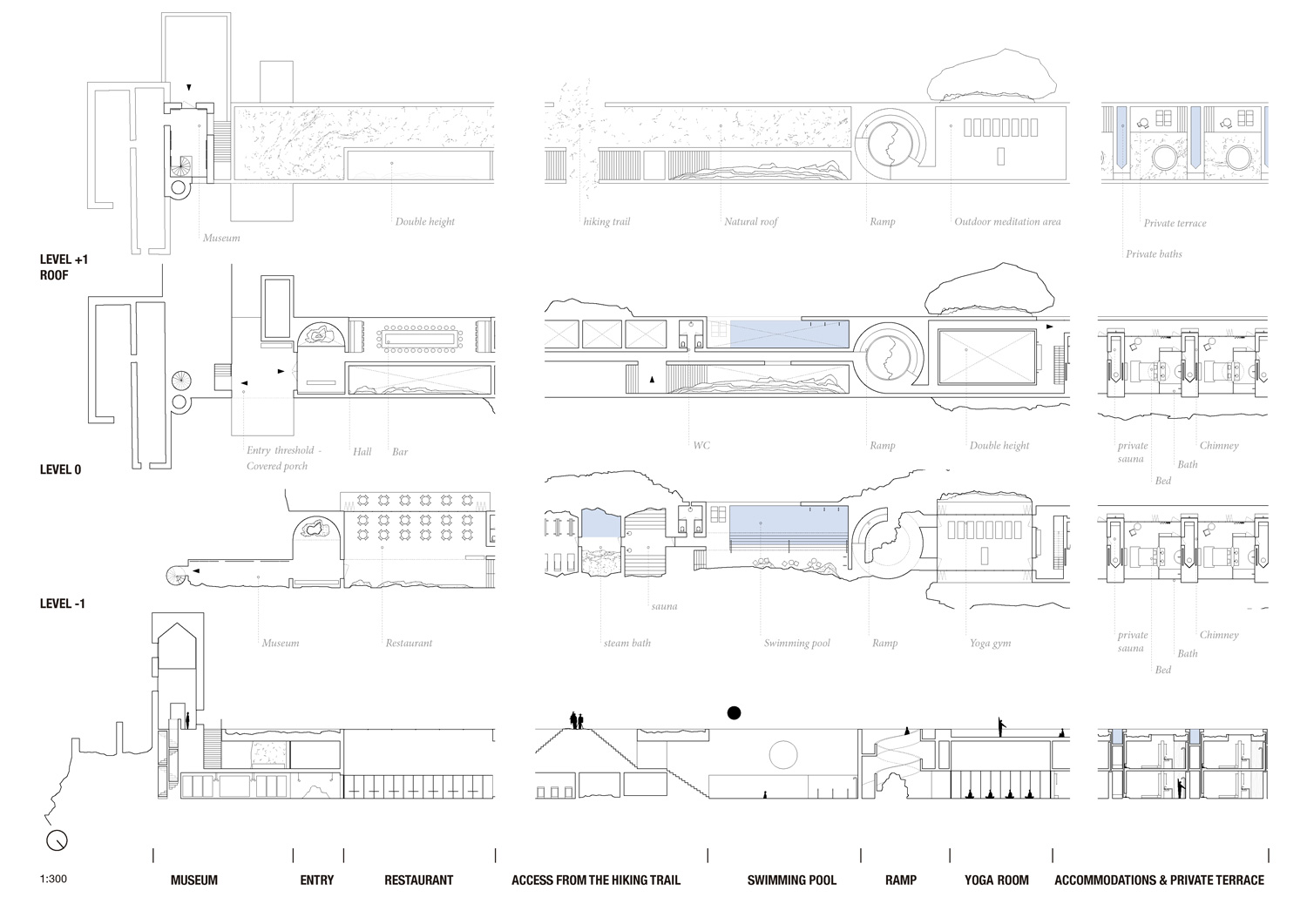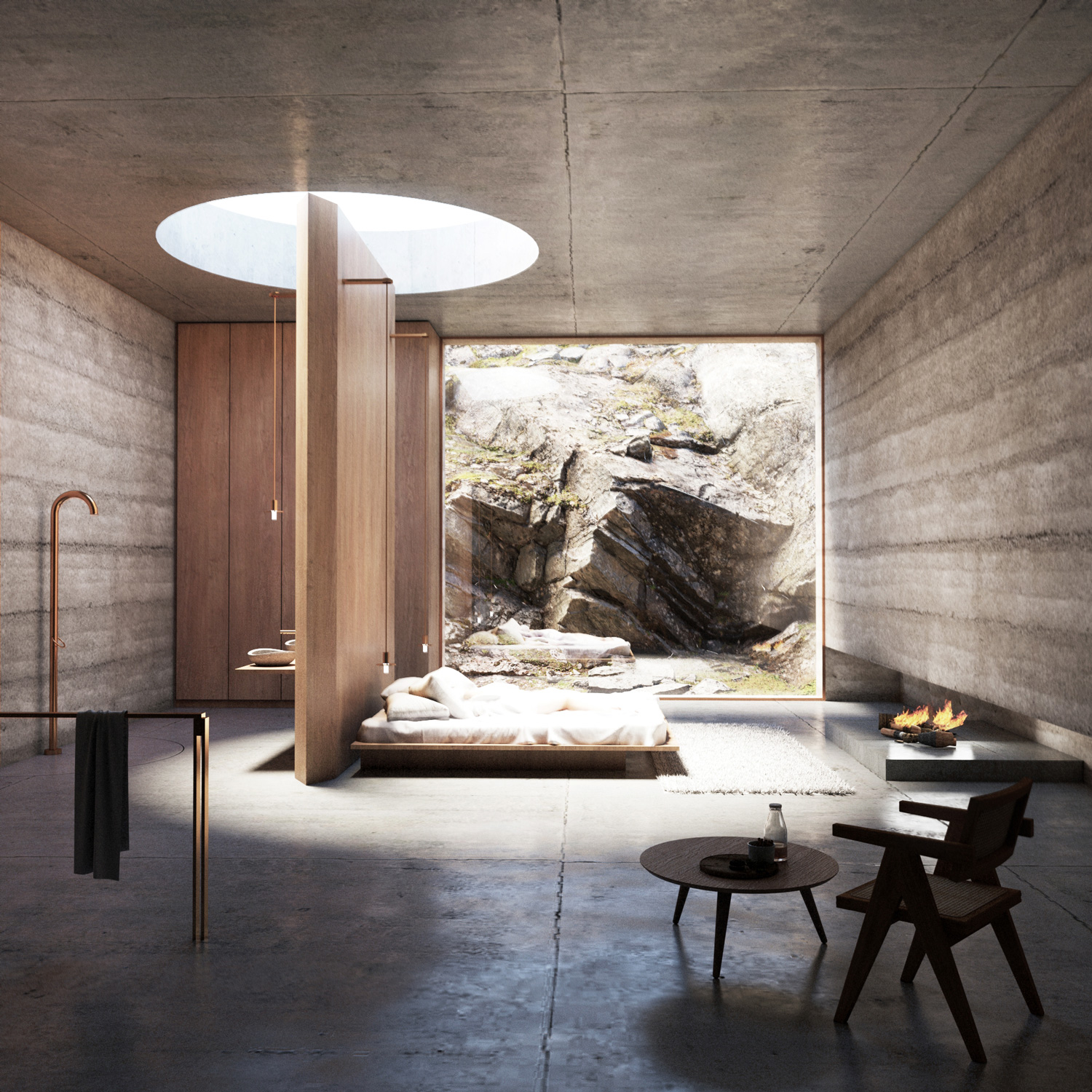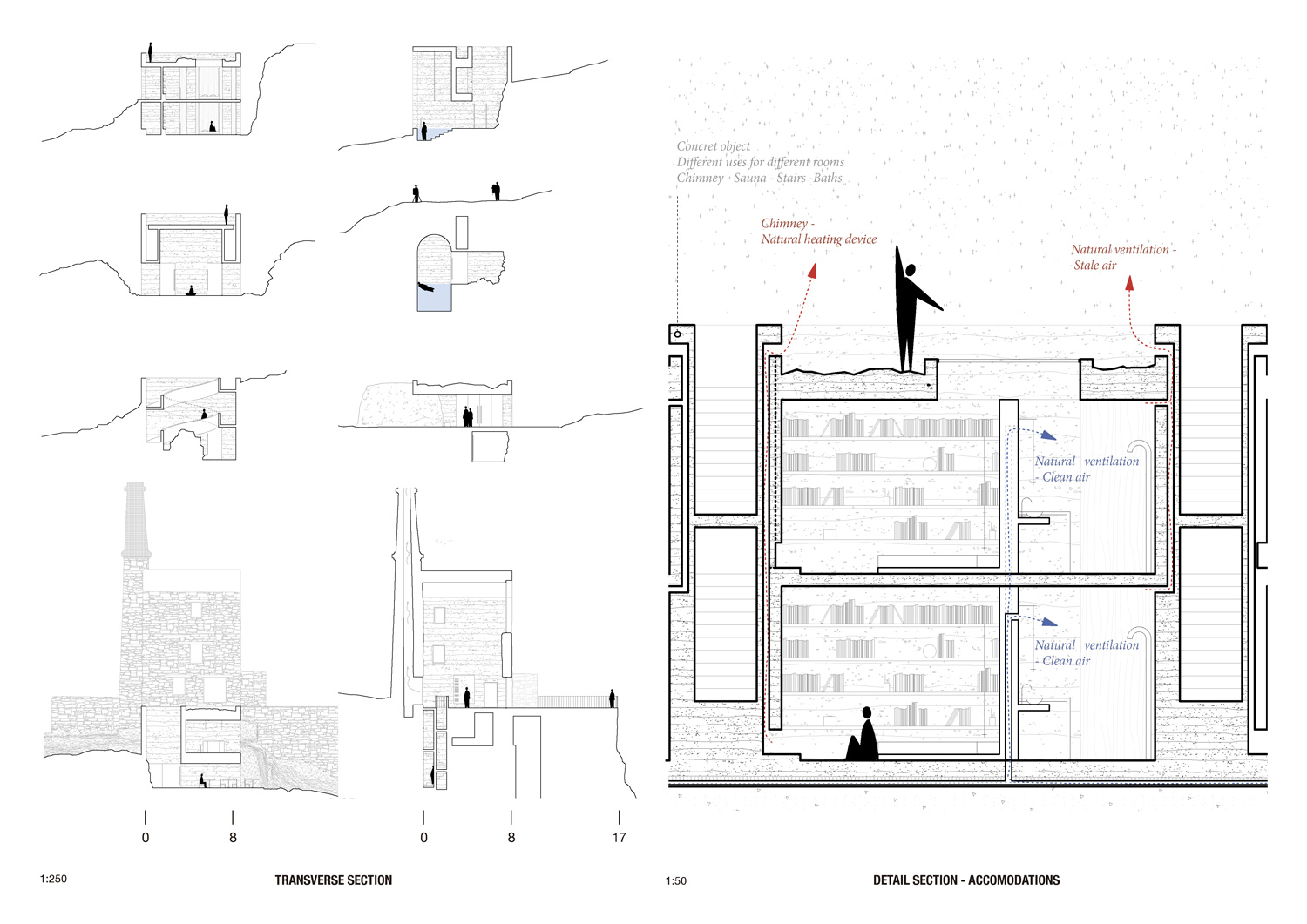3021-PID-IE-2022
Client: Young Architects Competitions
Status: Competition (2022)
Clasification: 1 prize
Location: Allihies, Ireland
Coordinates: 51.639005, -10.045699
Climate: Temperate, Oceanic / maritime
Materials: Concrete, Stone
Environment: Countryside
Visualizer: Studio
Scale: 2.000 ㎡ Medium
Types: Hotel, Residential, Spa, Sport
. The project is part of a territorial strategy focused on the transformation of masterpieces of Irish industrial archaeology. This research intends to take advantage of the geographical, landscape and climatic characteristics by considering the many ruined mining constructions that mark out the territory, as new project situations that can accommodate the new programmatic needs of the municipality and the county.
Now abandoned, these «machine-buildings» appear on the territory as the ghosts of an industrial past with a silhouette as elegant as it is singular. Carried by a strong imagination linked to the underside of our anthropized soils, like a “Journey to the Center of the Earth”(JULES VERNE) and echoing the programmatic past of these buildings, the project puts nature and artefact in tension in a desire to make livable a natural place and considers that all the symbiosis and harmony of the intervention rests on the ability of the building to coexist with its natural environment in which it is located.
The project provides for a part in rehabilitation and another in extension, in the continuity of the first, lying on the rocks which surround the old mine. The intention to embed the project in the rocky mass of the mountain gives the building a discreet insertion in an intense relationship between the distant landscape and the nearby landscape, between architecture and nature.
Indeed, both immersed in the ground and emerging on the surface like old mining constructions, the project reveals the history of this place in a mysterious atmosphere that humans have already confronted. It immerses us in darkness, clarity, matter, water, air, fire, silence, landscape, horizon. Our architectural, economic, technical and environmental response is based on the use of insulating site concrete.
This construction method consists of using concrete composed of site earth and gravel, water and cement, to which expanded clay balls have been integrated. The properties of these « Liapor balls » do not require any additional insulation of the building. The walls thus fulfill two functions: that of load-bearing elements and that of insulating layers.
The poetic character of matter and the phenomenological approach to humans is once again possible. The refined and linear geometry makes it possible to find all the richness in the assembly details, the formwork techniques as well as the texture and composition of the concrete. In connection with the mines and referring to the geological strata of the soil, the concrete is poured in passes 30cm high (horizontal stratification).
In addition, the fireplace, the flagship element of the site, is used for energy purposes. Like a Canadian well, this allows the building to act as a geothermal heat exchanger to naturally cool the air in the building in summer and warm it in winter. The fireplaces that separate the rooms allow both to naturally ventilate the spaces but also to heat them thanks to the wood fire.
Finally, the narrow design of the building makes it possible to carry facades to facades leaving the interior spaces completely free of load-bearing elements and makes it possible to envisage infinite reconfigurations. The East/West orientation of the spaces makes it possible to envisage optimal lighting without fear of overheating. Given the historical and symbolic value of the industrial archeologies that are the subject of the competition, no part of the existing structures will be demolished. A rehabilitation is planned on the main building, and a new adjoining structure extends to the west.
The legibility of contemporary structures in relation to historical structures is clear. The interventions are intended to enhance the reuse and understanding of historical elements. They ensure a balanced and effective dialogue with the natural context and are inspired as much as possible by the principles of accessibility and the principles of sustainability and environmental eco-compatibility. The construction respects the maximum height of 7m and has a useful surface area less than the maximum 2000m2 announced in the program. The spaces are buried at a maximum of 4m below ground level and they never come into direct contact with the existing galleries.
